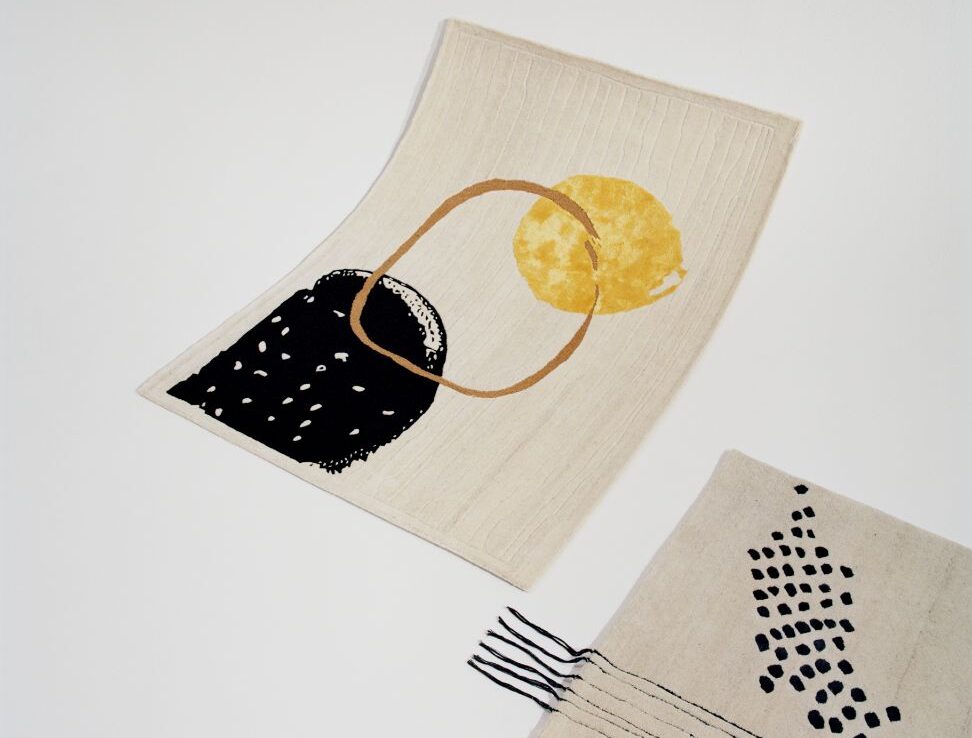As Norwegian Presence prepares for their third special online event for 2021, Clare Dowdy looks at how the design showcase, which has drawn crowds at the Milan Furniture Fair in recent years, has adapted to the challenge of enthusing visitors virtually.
What do you do when others steal the limelight? Clubbing together with others is one answer. There’s strength in numbers. That is the position the Norwegian design community found itself, back in 2015. Despite producing internationally recognised designers, Norway sometimes found itself overshadowed by designers from Denmark, Sweden and Finland.
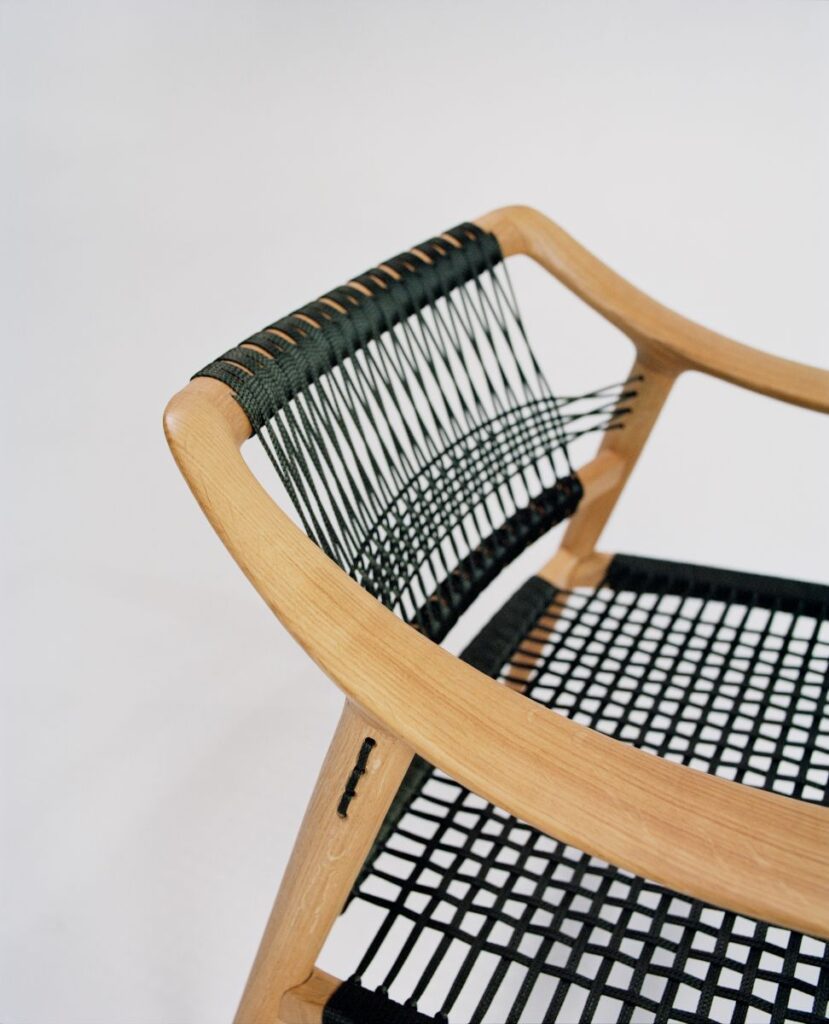
Norwegian Presence 2021 presented by DOGA (Photo: Lasse Fløde)
That’s how Norwegian Presence came to be. Set up by Klubben (Norwegian Designers Union), Norwegian Crafts (similar to the UK Craft Council) and the company Norwegian Icons, the group of Norwegian designers and producers presented themselves under the name Norwegian Presence at the design Mecca: the Salone del Mobile (the Milan Furniture Fair) for the first time in 2015. Today it is organised by the governmental body, Design and Architecture Norway (DOGA).
The annual event in Milan, Italy’s most style-conscious city, can put designers and manufacturers on the global design map. It’s where new business and PR opportunities flourish if you can get noticed in the hubbub of hundreds of stands – 2,418 exhibitors from 44 countries in 2019 – across a dizzying number of exhibition sites. For many it is the most important platform in the design calendar.
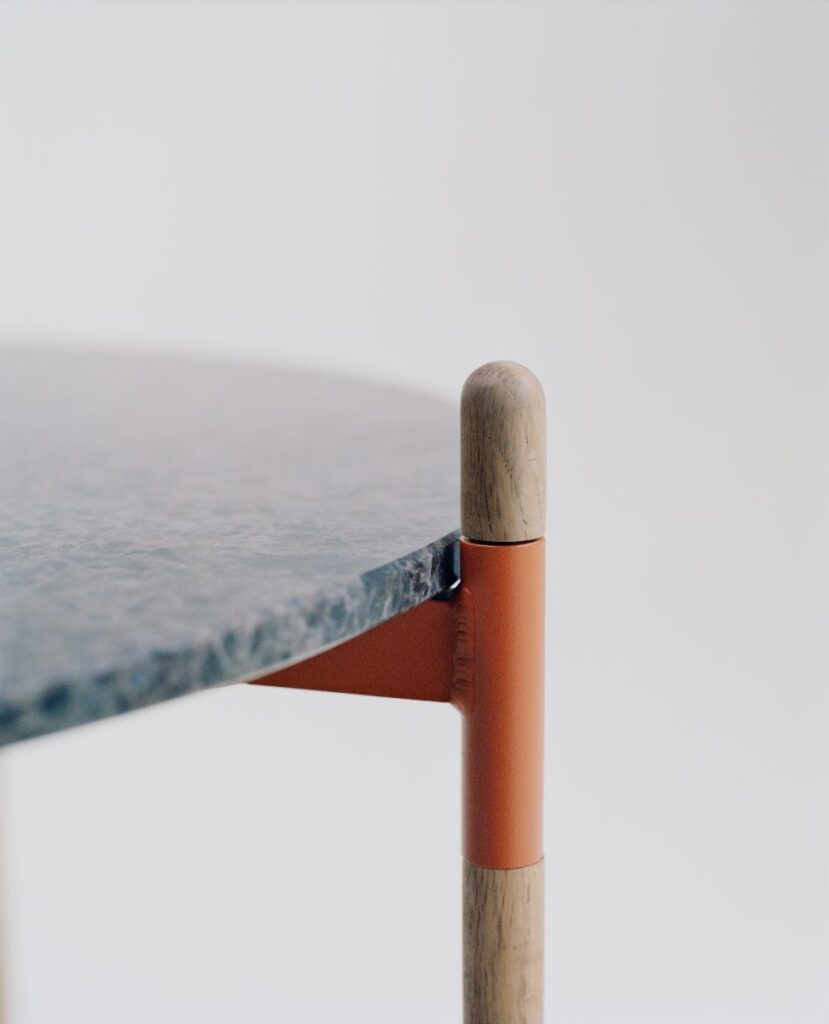
Dybwad&Wyller at Norwegian Presence 2021 presented by DOGA (Lasse Fløde)
Thirty-nine designers and artisans and eight manufacturers pitched up under the brand for the 2015 salone, a roster that included Andreas Engesvik and Fjordfjesta, two of the country’s highest-profile designers and manufacturers respectively. Norwegian Presence has participated at the Salone every year since, although, as with many design events, things were done differently in 2020. Just before self-isolation made such things impossible, the organisers set up a photo shoot in Edward Munch’s studio at Ekely, Oslo. Taking advantage of the Nordic winter light, photographer Lasse Fløde created atmospheric images of the products, created by the ten designers, curated by Marit Haugen from Oslo-based architects Haugen/Zohar and Benedicte Sunde of DOGA.
Last year, the exhibitors were chosen for their clever, fresh use of natural lower-carbon materials, such as wood, aluminium, stone and paper. It presented Tobias Berg’s Kvitre chair in powder-coated steel and leather – ‘kvitre’ means ‘chirp’ in Norwegian, hence the chair’s avian-like legs – perched artfully in a corner of Munch’s studio.
For 2021, DOGA is pushing this theme on, focusing on certain Norwegian manufacturers’ efforts to embrace the circular economy. This chimes well with last year’s manufacturing talent: the furniture makers Fjordfjesta, Gudrun (a fashion brand “with a green soul”), NCP (which recycles plastic from the local fish-farming industry), Hamran (creators of wood-based kitchens) and the stone business Lundhs. This year, they are joined by the aluminium producer Hydro and handmade rug brand Volver.
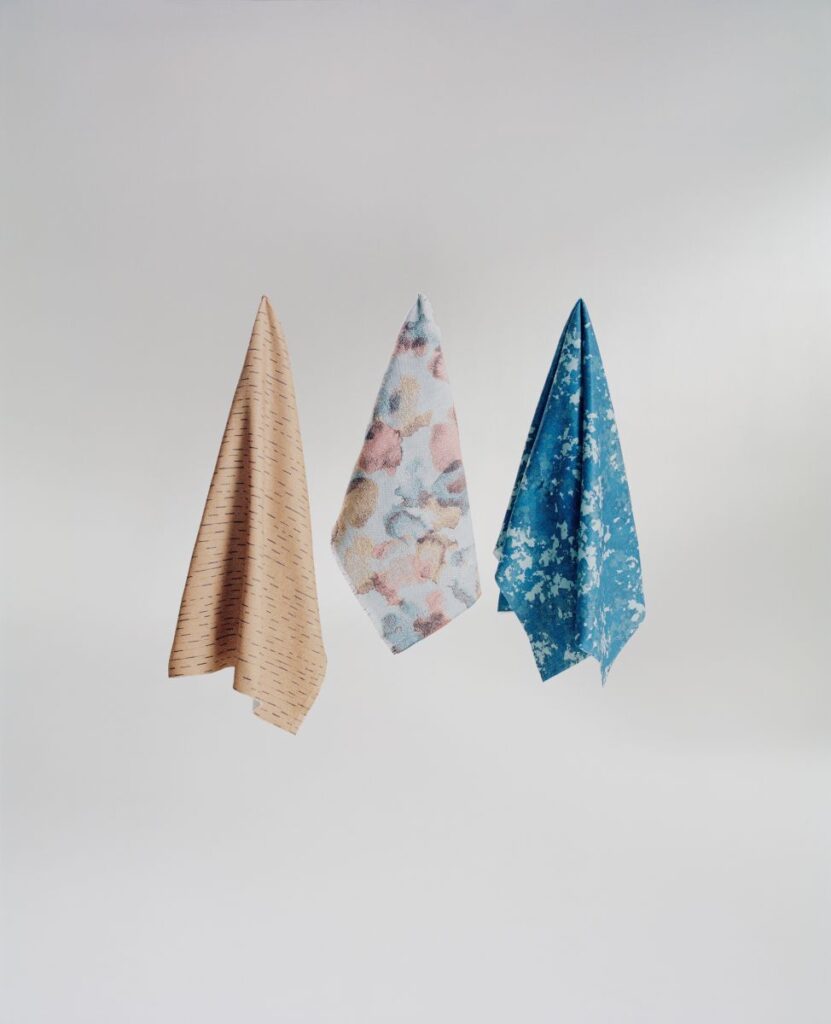
Plesner Patterns at Norwegian Presence 2021 presented by DOGA (Photo: Lasse Fløde)
This year’s designers also took part in Norwegian Presence 2020. Poppy Lawman’s Papirstein chair makes a repeat appearance. Recyclable, degradable and renewable, it’s made of compressed spruce paper pulp, a technique usually used to make packaging. British-born Lawman, who is based in Norway, was longlisted for Dezeen’s Emerging Designer of the Year in 2020.
Vilde Hagelund’s work is regularly showcased in London stores, and in 2020 she was named one of the world’s most promising young design talents by London-based magazine Wallpaper*. Her pedestal, tables and cabinet are all in solid birch, which was once the primary material for making furniture and tools in Norway. Also working in birch is Nils Stensrud, who created the Lulle daybed.
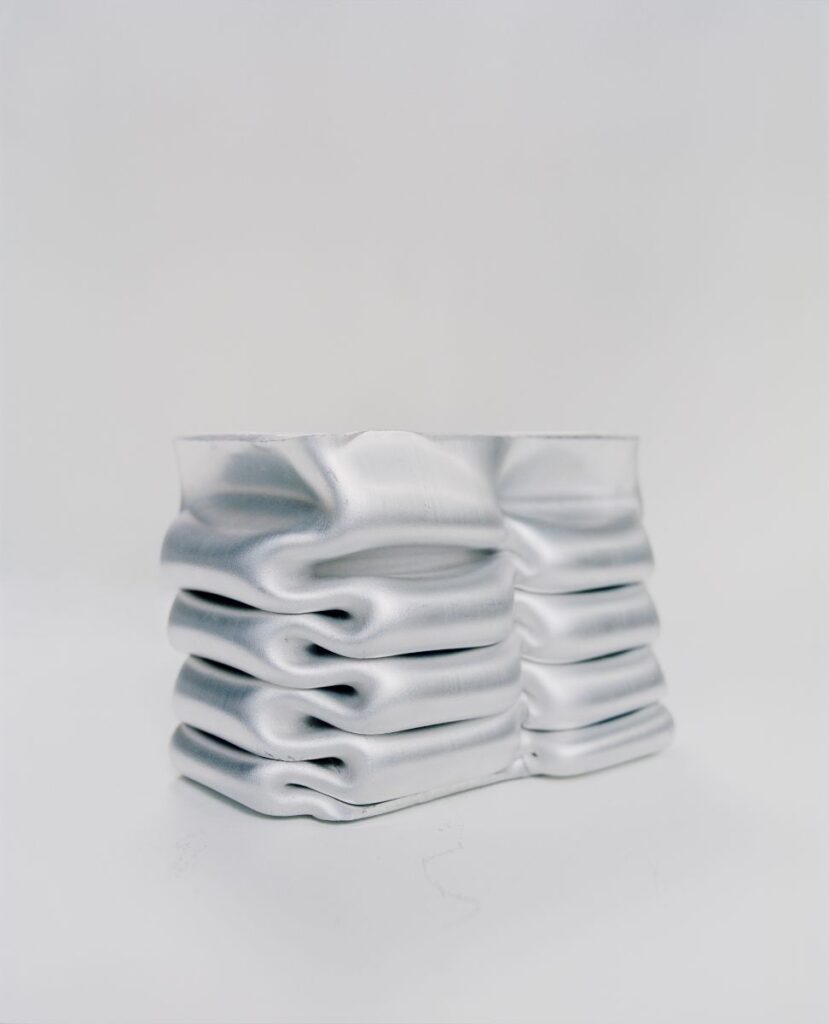
Hydro low-carbon aluminium has been used in a series of pieces at Norwegian Presence 2021 presented by DOGA (Photo: Lasse Fløde)
Lundhs, the biggest producer of natural stone in northern Europe, is represented in a number of pieces. Both Dybwad & Wyller and Ali Gallefoss have incorporated the Norwegian rock larvikite from Lundhs’ quarries into their furniture, combining it with Hydro’s aluminium. And in the centre of German-born Philipp von Hase’s maple and oak tables, spins a stone plate (also from Lundhs).
These designers, along with Berg, Sofie & Tiange and Kiki Plesner of Plesner Patterns, have online appearances on Norwegian Presence’s 2021 digital events this spring: three half-day virtual ‘round-table’ panel discussions, complemented by film content. Meanwhile, even though the Milan fair is planned for September, Norwegian Presence will be absent, deciding instead to put all its eggs in a virtual basket this year.
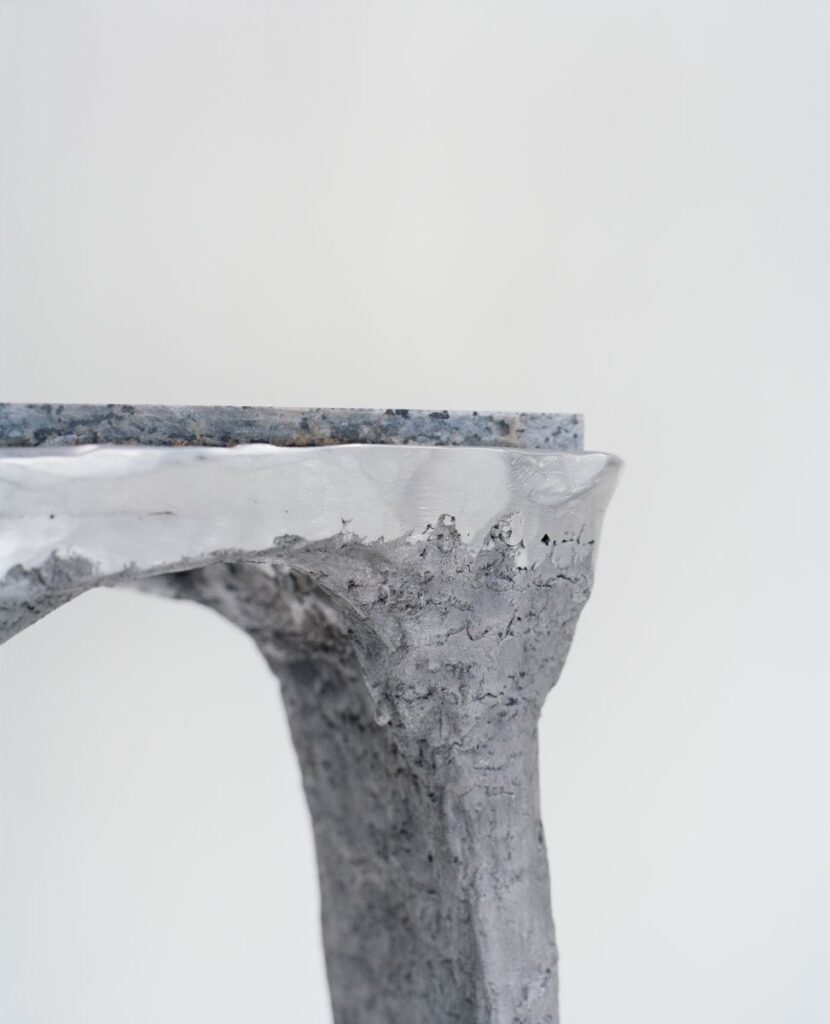
Detail of a table by Ali Gallefos at Norwegian Presence 2021 presented by DOGA (Photo: Lasse Fløde)
“While the pandemic has made us reflect on how we do business in the world, how we travel and interact with an increasingly globalised world was changing long before Covid came along,” says DOGA’s project manager for Norwegian Presence, Anne-Stine Bae. “This new reality is something we all have to rise to.”
In February, the online discussion titled ‘Circular Design vs Mass Production’ explored the principles of sustainability, and the appreciation of landscape and the environment, which characterise Norwegian making on micro to macro scales. According to Bae, the first event in February had almost 700 registrants.
The event in March, ‘From Maker to Museum’, focused on manufacturers’ appreciation of craft, and considered the role that they can play in relation to designers, craftspeople, makers and collectors.
The final event was in April, ‘A New Paradigm in Interior Design?’ questioning whether new products reflect the blurring of boundaries between homes and workspaces, and how these changes are coinciding with an aesthetic shift.
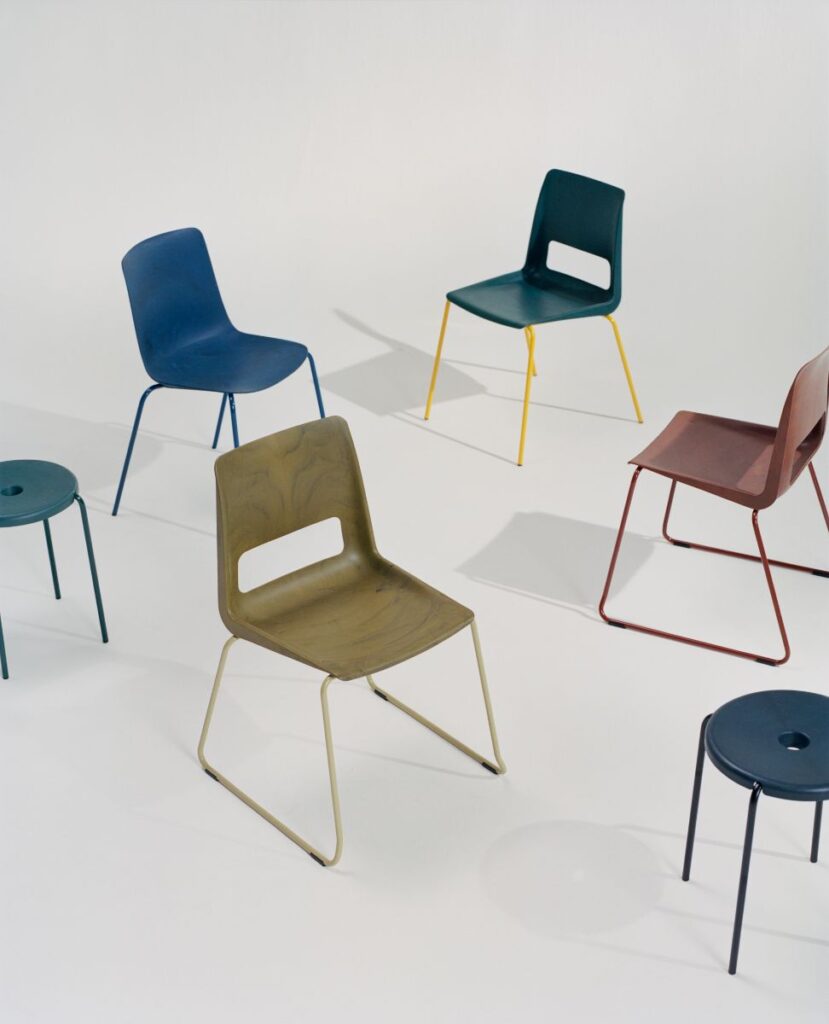
NCP chairs at Norwegian-Presence 2021 presented by DOGA (Photo: Lasse Fløde)
The talks were hosted on a platform which allowed the audience to ask questions verbally and in real-time, and to leave comments throughout the talks. “I think the interactive aspect of such an event is key, and helps elevate the experience beyond just another Zoom talk,” says Bae.
In 2019, the Milan salone attracted a record 386,236 visitors, drawn from 181 countries. But of course, they can’t all get to every stand, and big participants (the brands with large budgets) typically attract the most attention. In contrast, a digital event has the potential for a broader reach. “The opportunity offered by digital spaces means that we can invite a more international audience,” says Bae. In fact, she believes that the very international nature of the audience, “has shaped and informed the conversations that have taken place too.”
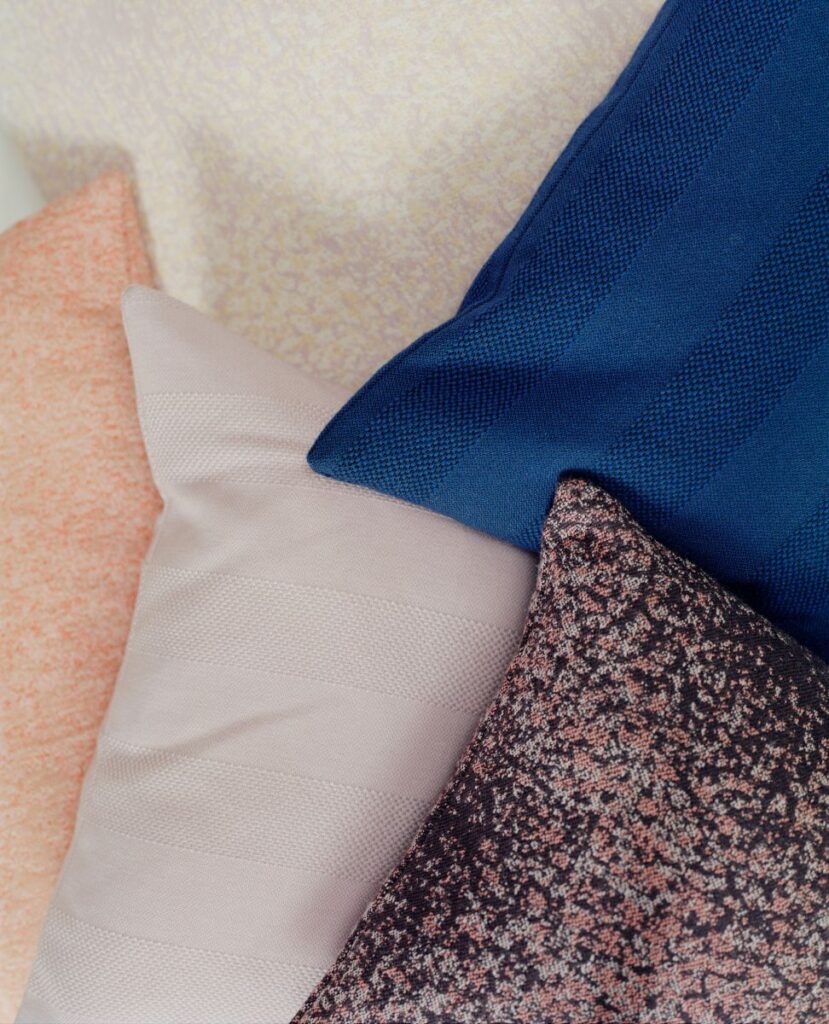
Plesner Patterns use everyday objects such as ink, moss and eggshell, before digitally printing their designs on natural fibres. On view at Norwegian Presence 2021 presented by DOGA (Photo: Lasse Fløde)
But juggling a panel of more than half a dozen speakers, while fielding live questions from a remote audience is no mean feat. The comperes have a challenging job – including William Knight of Design Dialogue UK who did a sterling work chairing the first debate.
While Norwegian Presence’s digital efforts will have been appreciated by those involved, Bae admits that “we’ve all missed the energy of a physical event; the buzz of human interaction, the impromptu conversations and the thrill of accidental encounters.”
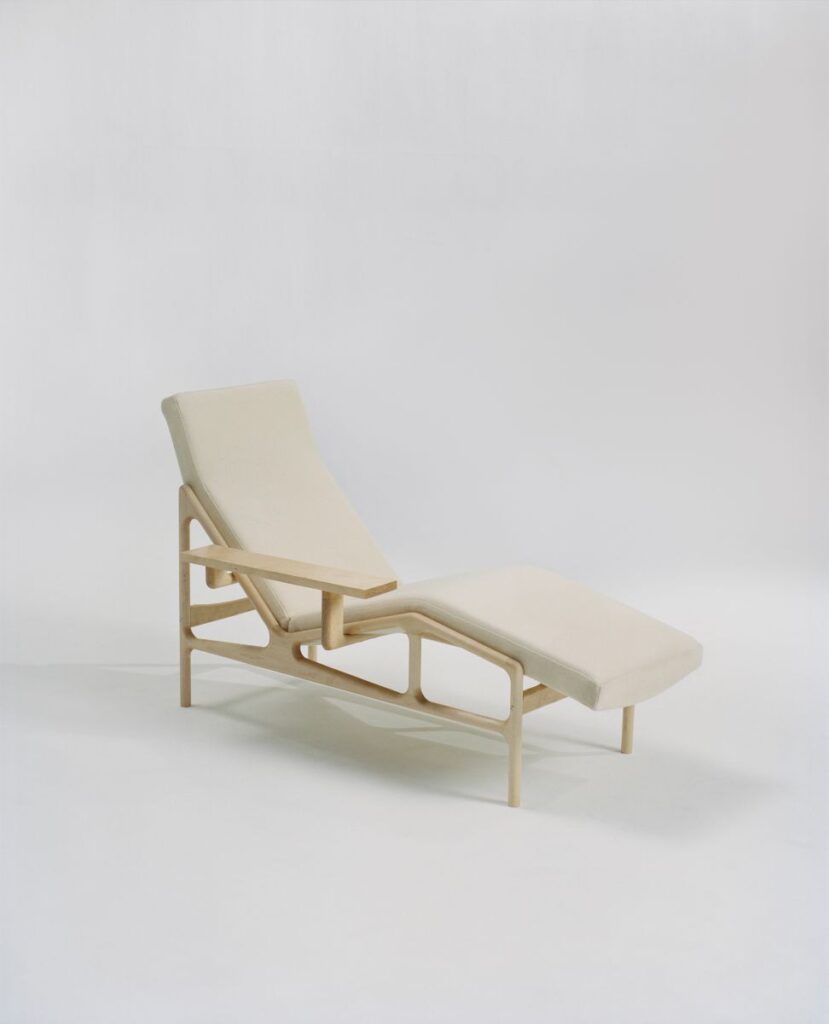
Nils-Stensrud lounge chair at Norwegian Presence 2021 (Lasse Fløde)
Like any product design exhibition, Norwegian Presence is about physical objects and processes, and “a digital space makes it difficult to accurately represent this tactile nature”. So, while the sense of touch has been denied, the organisers have focused attention on vision and sound “through commissioning film and sharing personal stories”.
As much as trade fairs like Milan’s Salone del Mobile remain key arenas for discussions and meeting contacts from within the design industry, “they can also be exclusionary in certain ways; limiting the audience as well as who can participate,” says Bae.
A digital space, on the other hand “opens a project, studio or brand to a wider global audience with fewer costs. This allows more voices to take part, which is an opportunity and a challenge. Technology isn’t a perfect solution but it’s now an essential requirement,” Bae adds.
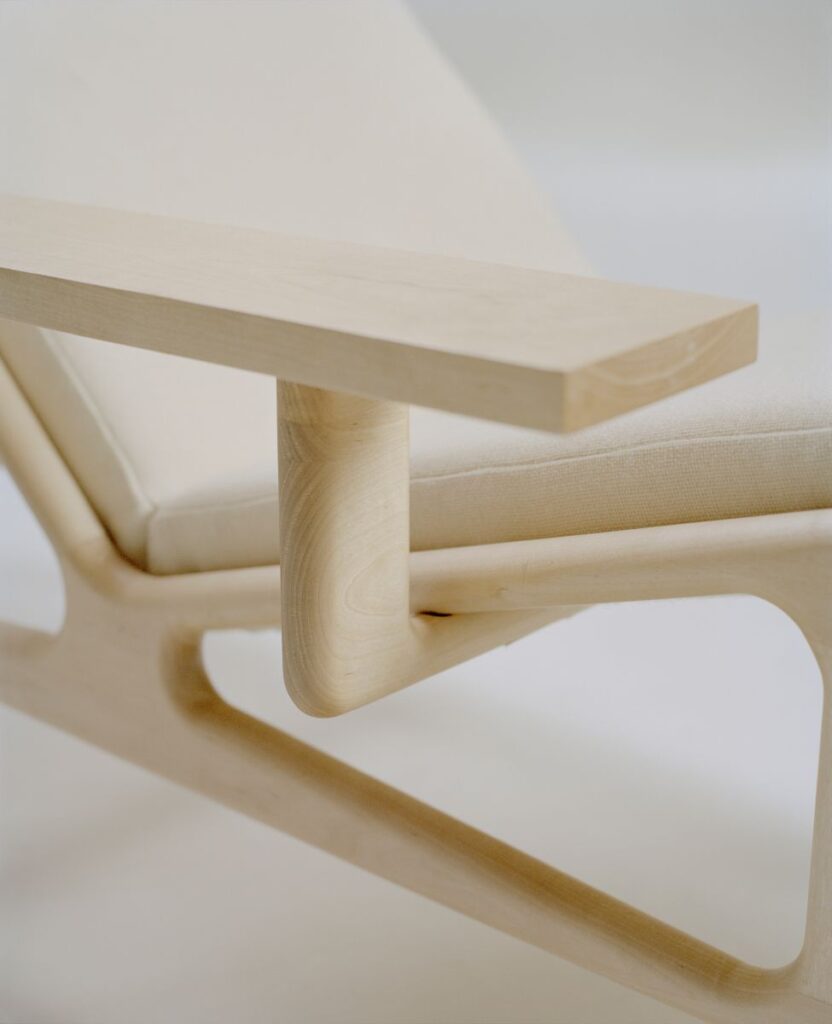
Detail of Nils Stensrud’s daybed at Norwegian Presence 2021 presented by DOGA (Lasse Fløde)
The lockdowns have forced exhibition organisers everywhere to give digital content the opportunity it has long been due. “For too long, digital was a kind of sorry add-on to the big budget physical event. And the early days of the pandemic saw some ill-advised claims that physical fairs might be about to be replaced,” Bae says. For her, the future will necessarily involve an intelligent approach combining both physical and digital strategies.
And for Norwegian Presence itself: “It’s difficult to imagine it being any other way but a fluid hybrid.”
For more information visit Norwegian Presence
Videos of all three events from Norwegian Presence 2021 are available on the DOGA webpage.

